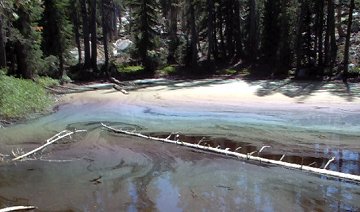 The space shuttle is in orbit. We can call you when it's about to fly over your hometown: Spaceweather PHONE.
The space shuttle is in orbit. We can call you when it's about to fly over your hometown: Spaceweather PHONE.
AURORA WATCH: If you live in Alaska, Canada or Scandinavia, be alert for auroras tonight. A solar wind stream is heading for Earth and may spark a mild geomagnetic storm when it hits. The source of the stream is a small coronal hole on the sun.
SOLAR FILAMENT: Sunspot 904 is dragging a long, dark filament behind it. Brane Vasiljevic of Kamnik, Slovenia took its picture on Sept 14th:

The view through a Coronado SolarMax60 telescope.
This filament is worth watching because it's about to follow sunspot 904 over the sun's western limb. When that happens, the filament could be transformed into a prominence. Filaments look dark when they're backlit by the blazing sun, but when they jut over the limb into the dark of space they reveal their true character--red, glowing and beautiful. Watch out!
UPDATE: In Falmouth, Maine, amateur astronomer John Stetson is already seeing a prominence over the sun's western limb--and "it's visibly changing; you can see this at the eyepiece," he says. Snapshots: #1, #2.
QUETELET PATTERNS: Mike Anderson was hiking the Ansel Adams Wilderness of California on Sept. 8th when he came upon something surprising and beautiful--a rainbow-colored pond. "The colors were coming from a thin layer of pine pollen on the water," he says. (continued below)

"These colored bands are not a rainbow," explains atmospheric optics expert Les Cowley. "They are an effect not in the books called 'Quételét Patterns.' Pollen grains dusting a lake stay dry and ride just above the water surface. They scatter light rays that interfere with other rays reflected from the water to make a colored pattern. Quételét Patterns can even be seen on dusty windows--an excellent excuse for not cleaning them very often!"

